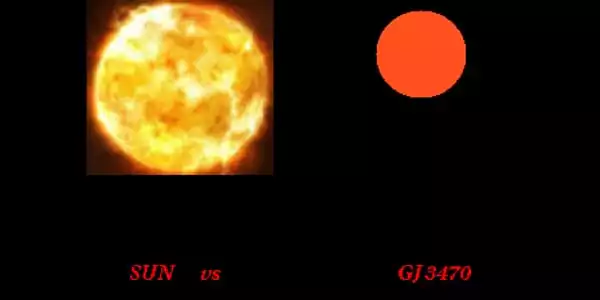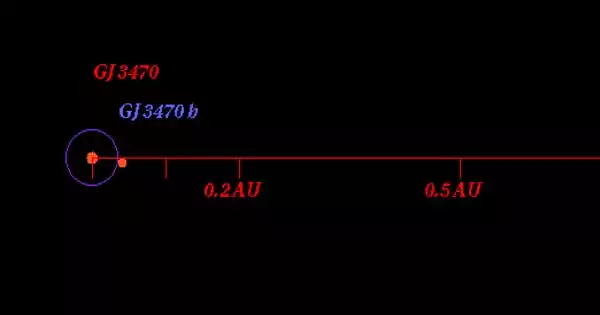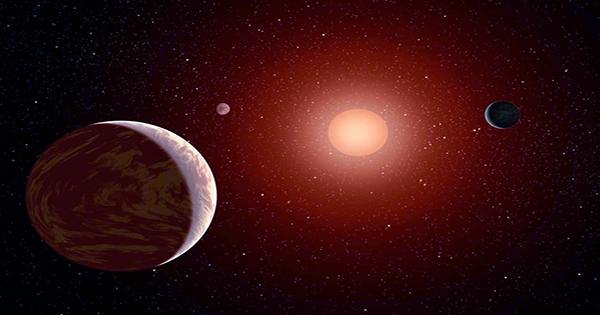GJ 3470 is a red dwarf star located 30 parsecs from Earth in the constellation Cancer. GJ 3470 b is an exoplanet that orbits the star GJ 3470, which is around 100.1 light-years (30.7 pc) from our Solar System. Its discovery was made public in 2012.
The star GJ 3470 islocated about 100.1 light-years (30.7 pc) away from our solar system. It has an apparent magnitude of 12.3, with an absolute magnitude of 9.9. It is 0.5 times more massive and 0.5 times bigger compared with our Sun. The surface temperature is 3652 with its spectral types of M1.5. Number of Extrasolar Planets : 1.
GJ 3470 has an apparent magnitude of 12.3 and an absolute magnitude of 9.9. It is 0.5 times more massive and 0.5 times larger than our Sun. The surface temperature is 3652 degrees Fahrenheit, and the spectral type is M1.5. GJ 3470 b, an extrasolar planet in this planetary system, orbits the star GJ 3470 every 3.3 days at an orbital distance of 0.04 AU.

Properties
The star has a mass of 0.539 solar masses and a radius of 0.547 solar radii. It is 1.6 billion years old, with a metallicity of 0.2 Fe/H. The star exhibits a strong stellar activity, with three ultraviolet flares detected by 2021.
Gliese 3470 is a Main Sequence Star. It is not part of the Cancer constellation outline but is within the borders of the constellation. Based on the spectral type (M2.0Ve C) of the star, the Gliese 3470 color is red.
Planetary system
At least one exoplanet has been discovered orbiting at a distance of 0.031 astronomical units. GJ 3470 b is a mini-Neptune with an orbital period of 3.3 days.
It is unlike any other planet in the Solar System. With a mass of 12.6 Earth masses, the planet is more massive than Earth but less massive than Neptune. Unlike Neptune, which is 3 billion miles from the Sun, GJ 3470 b might have developed as a dry, rocky object relatively near to its red dwarf star. It then gravitationally drew in hydrogen and helium gas from a circumstellar disk to form a dense atmosphere. The disk evaporated many billions of years ago, and the planet ceased developing.
In July 2020, a group of amateur astronomers revealed a new exoplanet candidate, which they hypothesize to be the size of Saturn and within the system’s habitable zone, as well as twelve preliminary transits from unidentified exoplanets in the same star system. If verified, GJ 3470 c would be the second exoplanet discovered by amateur astronomers, following KPS-1b, an exoplanet identified by Ural State Technical University using amateur data. The new GJ 3470 contender was discovered using amateur data and through a study organized by amateur astronomers. It is important to note, however, that the study in question has not been published in any scientific publication, nor has it been peer reviewed.
















